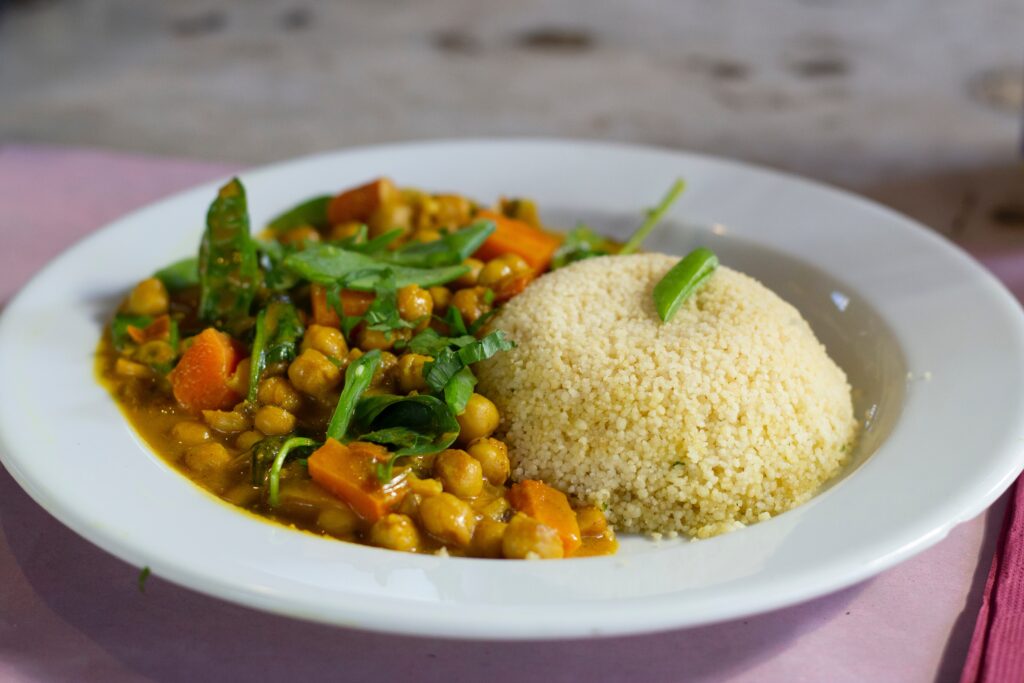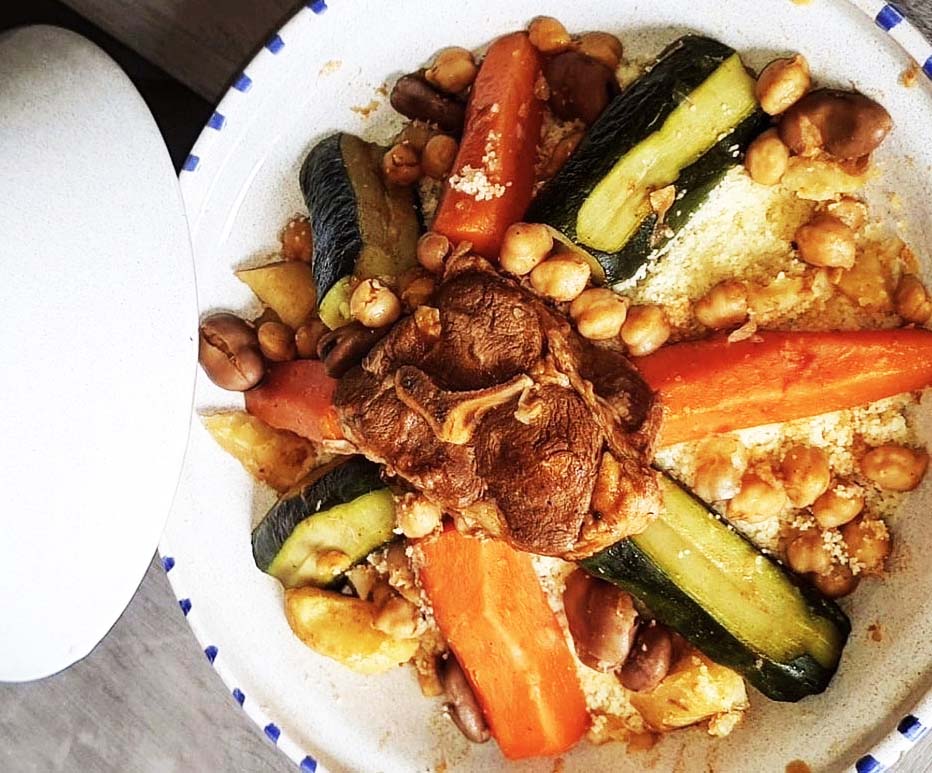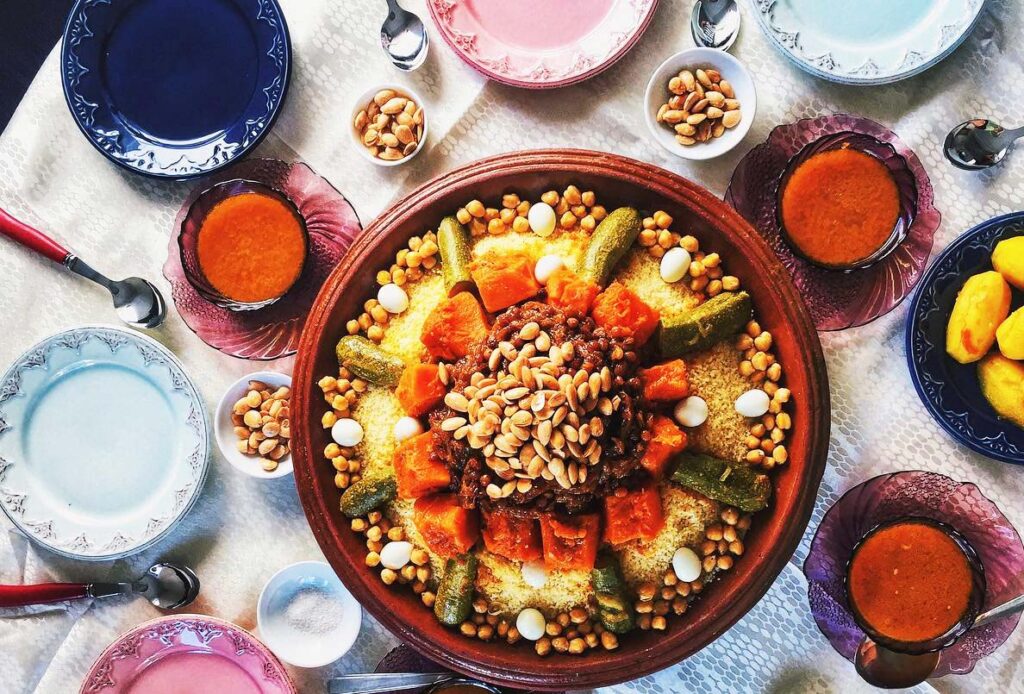From Fine to Pearl: Explore the Delicious World of Couscous with these 5 Delectibles

by Stefanie Michaels
Couscous is a traditional North African dish that has a long history dating back to at least the 7th century. It is believed to have originated in the Berber regions of Morocco, Algeria, and Tunisia, where it was made from the local grains such as barley, millet, and semolina.
Different variations of couscous dishes began to emerge and spread to other parts of North Africa and the Middle East. In the 14th century, it was introduced to the Mediterranean region by the Moors and quickly adopted by the local populations.
During the colonial period, couscous spread to France and other European countries, where it became a popular dish among immigrants from North Africa.
These days, couscous is enjoyed around the world and is considered a staple food in many countries.
A versatile dish, it’s made by mixing semolina flour with water to form small pearl-sized balls. They are then steamed and mostly served with a stew or sauce.
Did you know there are several types?
- Moroccan Couscous: This is the most popular type of couscous and is made from semolina wheat. It’s mostly served with a stew or sauce and is known for its light, fluffy texture.
- Israeli Couscous: Also known as the “pearl” variety, this type is larger and rounder than traditional Moroccan one. It has a slightly chewy texture and is often served as a side dish or in salads.
- Lebanese Couscous: This type is known for its delicate texture. It is often served as a bed for meats or as a stuffing for vegetables.
- Tunisian Couscous: Made from durum wheat flour, this iteration has a slight nut flavor. It’s typically served with a spicy stew because of its firmness.
- Palestinian Couscous: Similar to the Israeli type, but it is much smaller in size.
Here’s a simple recipe for couscous:
Ingredients:
1 cup couscous/box can be purchased from a grocery store
1 1/2 cups water or broth
1 tbsp olive oil
Salt to taste
Instructions:
In a medium saucepan, bring the water or broth, olive oil, and salt to a boil.
Stir in the couscous, cover the saucepan, and remove from heat.
Let the pearls sit for 5 minutes, then fluff with a fork.
Serve hot and enjoy!
You can also add various ingredients to customize the flavor, such as vegetables, herbs, spices, or nuts.
TIP: Use Couscous in exchange for pasta for a unique culinary option.

Optional Additions: Classic accompaniments for dishes include chopped coriander and parsley. Mint is also a great option, and you can try basil or other soft leaves. You can also cut orange slices or cleaned orange peels into small pieces, which can be added while bringing everything to a simmer.
To add in an extra zing, consider grating lemon rind and squeezing lemon juice. For added crunch, try toasting pine nuts or adding slivered almonds.
How it’s handmade:
The dish is typically made from durum wheat semolina, which is moistened and rolled into small balls. The balls are then steamed until they are light and fluffy then served with various stews, sauces, and vegetables.
Traditionally, it is made in a large, circular, shallow dish called a “Kiska” and steamed over a pot of boiling stew, then the dish is covered and left to steam until the flavors have combined and is fully cooked.
In addition to its use as a staple food, it is also commonly served at special events and celebrations, such as weddings and festivals. It is a versatile dish that can be flavored and spiced in various ways and it is loved for its simplicity and comfort food.



